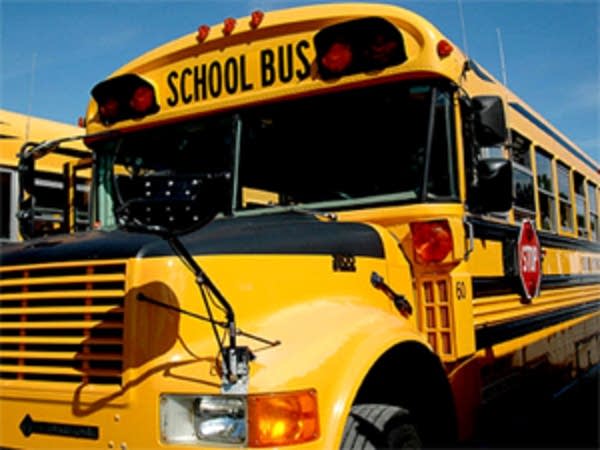Gov't pushing more fuel efficiency for trucks and buses

Future generations of semi-trucks, school buses and large pickups will need to cut fuel consumption and emissions by 10 to 20 percent under first-ever fuel efficiency rules for trucks announced Monday by the Obama administration.
For the first time, the Environmental Protection Agency and the Transportation Department released proposed fuel economy requirements and reductions in tailpipe emissions for medium- and heavy-duty trucks, beginning with those sold in the 2014 model year and into the 2018 model year.
The proposal, which is expected to be finalized next summer, seeks a 20 percent reduction in carbon dioxide emissions and fuel consumption from big rig combination tractors by 2018. Large tractor-trailers tend to be driven up to 150,000 miles a year, making them prime candidates for improved fuel efficiency.
Heavy duty pickup trucks, such as heavy-duty versions of the Ford F-Series, along with large vans would face separate gasoline and diesel truck standards phased in beginning in the 2014 model year. Vehicles running on gasoline would need to reach a 10 percent cut in fuel consumption and emissions by 2018 while diesel vehicles would need to hit 15 percent reductions by then.
Create a More Connected Minnesota
MPR News is your trusted resource for the news you need. With your support, MPR News brings accessible, courageous journalism and authentic conversation to everyone - free of paywalls and barriers. Your gift makes a difference.
So-called "vocational trucks," such as garbage trucks and transit and school buses, would need to achieve a 10 percent reduction in fuel consumption and emissions by 2018.
The White House has sought stricter fuel economy standards across the nation's fleet as a way to reduce dependence on oil and cut greenhouse gas emissions tied to global warming.
The fleet of new cars, pickup trucks and SUVs will need to reach 35.5 mpg by 2016, and the government is developing plans for future vehicle models that could push the standards to a range from 47 mpg to 62 mpg by 2025.
Improvements in fuel efficiency will come through more efficient engines, improved aerodynamics and better tires.
Medium-duty and heavy-duty trucks are much less fuel-efficient than conventional automobiles; the fleet of tractor-trailers typically get about 6 mpg to 7 mpg, while work trucks can achieve 10 to 11 mpg. While only representing 4 percent of the vehicles on the road, they consume about 20 percent of the transportation fuel in the U.S.
EPA Administrator Lisa P. Jackson said that in addition to the reduction in pollution, "greater fuel economy will shrink fuel costs for small businesses that depend on pickups and heavy duty vehicles, shipping companies and cities and towns with fleets of these vehicles."
The improvements in fuel efficiency will come through a combination of more efficient engines, improved aerodynamics and better tires.
The agencies estimated the new requirements would add $7.7 billion to the costs of heavy-duty trucks but said the efficiency upgrades would save $49 billion over the life of the vehicles. They said the operator of a semi-truck, for example, could pay for the $5,900 in technology improvements in less than a year and save as much as $74,000 over the truck's lifetime.
Truck manufacturers and suppliers have sought national standards that help them plan for the changes. Rich Freeland, president of Cummins Inc.'s engine business, said the regulations would "add real value to our customers, as better fuel economy lowers their operating costs."
Bill Graves, president of the American Trucking Associations, said the proposal was "feasible and can be attained through technologies currently available to motor carriers."
President Barack Obama said in May that he intended to release the standards this year, estimating then that the fuel efficiency of tractor-trailers could be improved by 25 percent using existing technologies.
A National Academy of Sciences report issued this year said the trucks could make broad improvements during the decade through existing technologies. It found that using advanced diesel engines in tractor-trailers could reduce fuel consumption by up to 20 percent by 2020 while hybrid versions of garbage trucks and buses could see a 35 percent cut in fuel use by 2020.
Environmental groups said they supported the push for greater fuel efficiency but said the plan should be strengthened to boost the long-term benefits.
Dan Becker, director of the safe climate campaign for the Center for Auto Safety, said that while the administration deserves credit for issuing the standards, "the bad news is that the proposal leaves almost half of the pollution savings on the table compared to what the National Academy of Sciences recommended."
The requirements would be voluntary at first but most trucks would need to comply in the 2016 or 2017 model year.
Commercial trailers would not be included in the requirements. Jackson said the agencies may consider regulating the trailers in future rulemaking.
(Copyright 2010 by The Associated Press. All Rights Reserved.)
